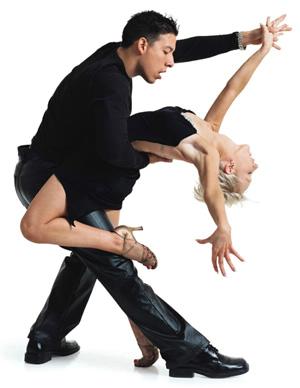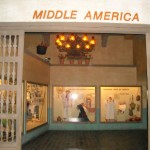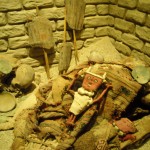December 2009
Monthly Archive
Tue 8 Dec 2009
Posted by Francie Fitzsimons under
UncategorizedNo Comments
Judith Lizmeth Soliz Cortez, known as Elize to her friends and family, turned fifteen years old on Saturday, November 28, 2009. I had the pleasure of attending because she is my step-father’s cousin. In her Mexican culture it is common for a fifteen year old girl to celebrate what is called a quincenera. A quincenera is an extravagant party to celebrate a girl entering womanhood. They are very similar to a sweet sixteen in American culture.
Before the party, all guests attended a special mass in honor of Elize. She was dressed in a very beautiful, white ball gown and had her hair done. During mass the family prayed for Elize and it continued on like a typical Catholic mass. After mass, the family left in a limousine to the reception hall. Elize was standing at the door to greet all the guests to take a special picture with her and to have them sign the Guest Book. Once we were finished with pictures, all guests ate a large meal with chicken and red mole sauce, Mexican rice, and beans. My step-father explained to me that this is the typical meal at a quincenera. Both alcoholic and nonalcoholic Pina Coladas were the drink of choice at this particular party.
The tables we were seated at were decorated with recuerdos which the guests were given to take home. Usually recuerdos consist of little hats, like Elize had, or stuffed animals, dolls, or figurines. Sometimes they even give out salt and pepper shakers. Another gift given to the guests were ribbons from her doll. We each wore them as corsages.
Elize was given a crown, which is very common for a quincenera. She, then, participated in a special dance. First, she danced with her chambelanes, which are her escorts for the party. They danced to upbeat, cumbian music. Next, she danced with her mother and father. Then, all the padrinos and madrinas were invited to dance. Padrinos and madrinas are the people who help pay for the party. My family helped pay for the cake.
After that, she was given her last toy which was a large doll. Then, the band played Feliz Cumpleanos (Happy Birthday) and cut the cake. The cake resembled a wedding cake. It was a white cake with strawberry filling and had multiple tiers. Once the cake was cut, everybody loosened up and enjoyed some drinks and dancing.
I believe this event ties into our class because I got to see a Spanish Catholic mass. I learned that Spanish mass is very similar to the mass performed in my church. Also, I was able to hear the Mexican music and learn which genre it came from. My step-father explained to me that it was Cumbian music. Another topic we covered in class was dance. Although the dancing was very different from the Capoeira, I believe it was beneficial for me to observe. There was not one Mexican person that did not know how to dance. I found this very interesting.
After leaving this party I was curious if there was a special party for men to celebrate their transformation into manhood. My parents explained that there was not. I truly enjoyed myself at this party. I think that all people should attend one to see the great lengths they go to. It also showed the closeness of the Mexican families. Overall, I was very glad to be there and I have learned a lot.
Mon 7 Dec 2009
Posted by Bert Kreitlow under
UncategorizedNo Comments
It’s tough to pick, but I can give six types of music as a tour of the variety of Latin American music. These are chosen because they are influential throughout the Americas and world, but still recognized as of a certain place. All Brazilians embrace samba as their national sound, for example, and likewise tango in Argentina or merenque in the Dominican Republic.
So the six types of music are: reggaeton from Puerto Rico, salsa from Cuba, merengue from the Dominican Republic, Andean music from the entire Andes region from Chile up to Colombia, Cumbia, originating in Colombia (but performed in this case by the late Texas singer Selena, and Samba from Brazil.
The playlist player gives an example of each of the six types I am featuring. Click on the button for a pop-out player.
For a much broader survey, see this Website that also locates each of the myriad styles in his home region and links to some samples.
Thu 3 Dec 2009
Posted by Sydney Divelbiss under
UncategorizedNo Comments

Christopher Washburne quotes, “Although Salsa consists of Cuban and Puerto Rican roots, the passion and pain for the dance shouts from the rooftops of New York City.” In Washburn’s book titled, “Sounding Salsa,” it discusses the importance of the dance and music, its origins and how Salsa changed the lives of New Yorkers forever. After talking with a fellow dancer, this book was recommended to me in hopes of explaining how Salsa became successful in both Latin America and United States cultures.
Salsa is a sensual dance created by Spanish-speaking people from the Caribbean. Salsa mixes African and European dance influences through the music and dance fusions that are the roots of Salsa. The steps involve large amounts of shaking, shimmying and hip action which requires you to be in touch with your body and your partner. Although the dance was created in Latin American territories, New York came up with the term “Salsa” and made it what it is today. Washburne particularly discusses the importance of the Latin and American influence on the dance. If there wasn’t a collaboration of cultures and traditions, Salsa would not be as popular as it is today.
Washburne, a professional Salsa musician describes how the music and dance was brought to New York City, the violence and drug abuse that has followed the style and how salsa has affected New Yorkers and Americans alike. Salsa was brought to New York City in the 1990’s and the dance grew as it intrigued gang members and other people seeking a new style. Americans became intrigued by the laid back partner dancing and especially the music. However Salsa also gave gang members reason to battle. These battles started out in Queens and would generally result in violence. This brought some Americans at a crossroad as to whether Salsa had a positive or negative influence on the city.
After reading Washburne’s book, it inspired me to get out in the community and experience Salsa for myself. I contacted a local dance company that offered a wide range of Salsa and other Latin American classes. Dando Mambo Dance Company is a well known studio that offered social courses at the Cardinal Bar. I was able to take a partner and actually participate in a class. My instructor was Edgar Molina, who started dancing at age 6 and learned Salsa by age 10. In his words, “Salsa is more than just a dance, it’s a unique feeling. The rush and energy that occurs on the floor brings fire to the dance. It’s a spiritual experience that I try everyday to share with others.”
In conclusion, reading and being able to experience Salsa has allowed me to get into the depths of the dance. One question that occurred to me was would Salsa be what it is today without the music? Washburne explained that even if salsa was put with a different genre of music, it still wouldn’t be the same. It’s the music that makes the dance and the dance that makes the music; one is nothing without the other. Salsa dancing relates to many topics we’ve discussed throughout the semester, one including Alma Guillermoprieta’s lecture on culture and what it is to be Mexican. Culture is a very important aspect of salsa dancing, without following tradition this technique would not still be around today. Salsa also relates to DJ Luis Islas’ music and previous discussions on violence with music. I’m very fortunate to have been able to experience this topic and I hope to be able to continue studying and taking classes in the future.


Wed 2 Dec 2009
Posted by Jaclyn Riemer under
Uncategorized[2] Comments
 Nachito Herrera is a Cuban pianist quickly gaining recognition in the United States. Originally from Havana Cuba, he has become a familiar face at the Dakota Jazz Club in Minneapolis, MN since moving to St. Paul a few years ago.
Nachito Herrera is a Cuban pianist quickly gaining recognition in the United States. Originally from Havana Cuba, he has become a familiar face at the Dakota Jazz Club in Minneapolis, MN since moving to St. Paul a few years ago.
Herrera’s career as a musician began at a very young age. When he was only twelve years old, he performed with the Havana Symphony Orchestra. In his twenties he worked as a pianist and musical director at the famous Tropicana nightclub in Cuba. During the 1990s, he was a member and director of the Cubanismo. As a member of Cubanismo touring in the United States, Herrera’s name started to become known around the country. Since then, he was invited to play twice at the Gilmore Festival, the preeminent piano festival in North America. Recently he played at Joe’s Pub in New York and just finished a forty city tour with the Afro-Cuban All-Stars.
While in general a very talented musician, Herrera’s signature style is combination of Western Classical music with Cuban rhythms. Click on this link to get a quick lesson from Herrera on how he combines Classical music with Classic Cuban.Music lesson from Herrera
The performance I attended at the Dakota Club on Nov. 28 truly showcased his ability to mix different styles of music smoothly. Cuban music and rhythm itself was created by drawing upon Spanish, African, and Indigenous influences. Herrera continues the tradition of mixing different cultures by combining Cuban rhythms with American Jazz. His music will easily change from what could be considered Cuban to Jazz and back again, but the underlying Cuban rhythms are never lost. An electric bass player, Yohannes Tona from Ethiopia, a drummer, Kevin Washington also from Havana, and a singer, his daughter Mirdalys Herrera, were the only accompaniment Herrera had. Tona and Washington kept the beat as Herrera’s fingers flew over his keyboards and piano. Occasionally Washington added in a bit of steel drum, emphasizing the Cuban flair in the composition. Mirdalys’ vocals added the richness of the music already being played and gave me a chance to practice my Spanish. She would also dance some salsa while singing which gave the audience a look at another aspect of the Cuban culture.
Herrera’s music is colorful and exciting. The Cuban rhythms will make your toes tap along inadvertently and put you in a good mood. His performances are casual and interactive as he encourages the audience to clap along to the beat. The atmosphere he creates is so warm, comforting, fun, and Cuban, that you will feel like you are in the Tropicana.
The next performance by Herrera at the Dakota Jazz Club will be on December 18th and 19th. It is titled ‘Cuban Christmas’ and he will be adding his Cuban rhythms to Christmas classics. Check out the Dakota club’s website at www.dakotacooks.com and make reservations early because Herrera’s performances always fill up quickly.
Wed 2 Dec 2009
Posted by Marissa Malek under
UncategorizedNo Comments
For many years the United States and Cuba have not been on very good terms in the sense of traveling between the countries. Finally, here is some change that we can believe in. The U.S. blockade on Cuba is alive and well, but Obama’s given some leeway. For the first time since the start of W’s second term, Cuban artists can get visas to visit the States. With a lot of help from the Madison- Camaguey Sister City Association, support from Edgewood College, Dane County Cultural Affairs Commission, and the Overture and Pleasant T. Rowland Foundations, painter Orestes Larios Zaak and sculptor Gregario Perez Escobar are the exhibitors in the Di Ricci Gallery.
Keeping up with Cuba’s events can be difficult, but many people are surprised by the events that we have Cuban artists in the States showing us their story. The island faces technological challenges largely linked to the blockade, but the Internet access is expanding, and personal cultural exchanges like these pieces create new connections. Larios and Perez, widely known in Cuba, are represented in private collections in Europe, South America, and Canada. “When our messages reach everyone, we can say we’ve left behind local artists behind; today we’re universal artists, “ Larios says.
When visiting the gallery it showed that Larios and Perez showed some global characteristics and a naturalist way of doing things. Perez’ wooden objects are what he would call universal paradoxes, which range from things you would find in the environment to psychology. For example, Perez had a brain’s impaled on the shaft of a hand- crank motor and a denuded tree is stuck in a pencil sharpener. I really felt that you had to think deeper on each piece because they all had a deeper meaning that did not always jump out at you.
The gallery also pointed out that Perez works almost always with wood, including mahogany and guayacan. Wood’s a prominent part of Cuban sculptors works because it is a very available object. “Above all I try to be a man of my times, I want to think critically. I look for universal problems and create sculptures with the objective of getting the viewer to react to how to improve our human condition.”
Even though Perez and Larios have a similar connection with their works, Larios expresses himself by doing paintings. Either by oil on canvas, or sometimes acrylics on cardboard they are all beautiful. All of his pieces are very soothing to look at. It is almost as if they are supposed to be meditative. Larios has been trained in photography and influenced by European and U.S. hyperrealists. He creates beautiful images of nature with plants and insects in almost every piece. Each piece is very simple with usually an insect and some grass or flowers. Do not let the simplistic look to think that they are not elegant. Each one has a lot of detail, as if the photo is alive right before your eyes. “We live in an aggressive world, where nature and human beings are constantly assaulted, “ he says. “When I sit down to paint I feel a spiritual peace that isolates me from that violence.”
With my visit to the Di Ricci gallery, it reminded me of Diane Soles’ experience with Cuba. With the Cuban artists shown at the gallery it was basically the same thing Diane Soles experienced. All of them are artists in some way, whether they are studying art forms or actually partaking on the event. Diane Soles like Perez and Larios were given visas to travel and share their works, but has been hard since the Bush Administration.
I really learnt a lot from my experience at the Di Ricci gallery. It showed me that the artist’s way of conveying a message did not have to have words at all. The artists had a deeper meaning to their works and it showed how talented they really are. Instead of the U.S. and Cuba focusing on each other’s governments, maybe we should pay more attention to the experiences we may be missing out on.
To look at images of these artists go to http://images.google.com/imgres?imgurl=http://pics.livejournal.com/cubarte/pic/00019pf7/s320x240&imgrefurl=http://cubarte.livejournal.com/&usg=__pQFPjmU66kIcnfOOdFPhTiSGVyA=&h=237&w=320&sz=42&hl=en&start=7&um=1&tbnid=6KuDQvoVwM9QMM:&tbnh=87&tbnw=118&prev=/
www.thedailypage.com/isthmus/article.php?article=27292
Wed 2 Dec 2009
Posted by Bert Kreitlow under
Uncategorized[5] Comments
To speak about Latin American music is to enter into a universe-sized space filled with complexity, combinations, historical flow, and tunes. It is vast. A quick tour of Mexican music is more manageable, since it is a single country, but its own history and complexity takes up a galaxy of space on its own.
Luís Islas, a native of the Mexico City area of Mexico and a long-time resident and business man in Whitewater, was our guide in this quick tour during an appearance at the UW-Whitewater University Center.
Mexican music offers its riches in part due to the influences that it absorbed. Probably the sound that first comes to mind to a U.S. resident when Mexican music is mentioned is the sound of banda, conjunto, norteña, ranchera, with brash horns or accordian. These types reflect the influence of German immigrants, both to run the breweries of northern Mexico or in the mixed quilt of cultures in what is now the state of Texas. But a traditional sound in the south of Mexico and among Maya peoples is the marimba, a xylophone-like instrument with made of tropical wood and containing a vibrating reed. This instrument is evolved from similar instruments brought from Africa as part of the legacy of slavery in the Americas.
Wed 2 Dec 2009
Posted by Jennifer Podgorski under
Uncategorized1 Comment
I recently watched a great film called Sin Nombre directed by Cary Fukunaga. I saw a preview for it based on another film from the same production company, Focus Feature Films, which produces many foreign language films. It is the same company that produced The Motorcycle Diaries. I also try to watch as many movies in Spanish or regarding Mexico as possible, so Sin Nombre appealed to me. It subtitled, as it is in Spanish and varying indigenous Mexican dialects; the linguistic differences are also very interesting. The main themes of the film are gang violence, troubled youth, and the survival tactics of an immigrant.
Sin Nombre simultaneously delves into the lives of two young Latin Americans whose paths cross by a strange turn of events. It is about a young Honduran girl, Sayra, who is forced to migrate with her family to the United States, passing through Mexico on the way. According to her story, it is a very accurate portrayal of an illegal immigrant’s struggle to enter into the United States and the many dangers one may face along the way. During her journey, she meets a Mexican gang member named Casper, who is the film’s other main character. His side of the story illustrates the life of a young gang member from Chiapas; it is accurate in the fact that it is very graphic and portrays a real gang affiliation. Casper and Sayra strangely meet on a train towards northern Mexico. They become involved and must later rely on each other to make it to the United States alone in hopes of a better life and escaping their pasts.
Some questions that came to mind while watching the film were about the accuracy of the depiction of an immigrant. For example, do many people really go on foot all the way from Central America to the United States? How do immigrants of varying nationalities perceive each other? Are there many networks of people that are so willing to help migrants in crossing? The film presents many questions, but does a great job of portraying an immigrant’s strategy of passing through Central America on foot, hitch hiking, trainhopping, and by the use of coyote. Next, Sin Nombre is a great example of the resentment felt between varying immigrant groups. In Mexico, people tend to have negative stereotypes of Guatemalans or other Central Americans; on the contrary, once in the United States, the majority of Hispanic immigrants are assumed to be Mexican. Finally, the film seemed to convey that many clandestine organizations are willing to help immigrants in crossing, whether it is the train conductors or people that provide cheap lodging.
Many topics from class were also addressed in the film. For example, Professor Winship’s presentation about the youth in El Salvador applied to the film in the aspect of many children living away from their immigrant parents, as way the case with Sayra. His presentation was also relevant to the topic of youth violence, which was a focal point of the film. Professor Schemenauer’s presentation on the connotations of women traffickers was also relevant in the aspect of Sayra as a young, female immigrant. Overall, I really enjoyed the film and would recommend it to anyone interested in Mexican gangs, immigrant journeys, or the youth of Central America.
Wed 2 Dec 2009
Posted by Whitney Wood under
UncategorizedNo Comments
My grandparents have lived on 27th Street in Milwaukee for four decades. Besides watching their children grow up, watching the station wagons and Skylarks turn into mini vans and SUVs, watching people walk to the mailbox to mail letters become people chatting away on cell phones, my grandparents have had a front row seat witnessing the explosion of Latinos in Milwaukee. Frequently visiting Grandma and Grandpa, I have noticed this too. The ice cream cart that used to come around on hot summer days selling Klondike bars now serves paletas and dulces. Today’s Latino population in Milwaukee is over 100,000! Between 1990 and 2000, the number of Latinos living in Milwaukee more than doubled. I decided to really explore the impact Latinos had in Milwaukee, and the best place to start was at the very beginning.
My journey started at the Milwaukee Public Museum. After climbing up to the third floor, I found myself in “Middle America.” The first half of this exhibit was dominated by Guatemala. Next came a taste of Mexico, and when I saw a llama and mountains behind the glass, I knew Peru was now being displayed. When I saw a small staircase, I hopped upstairs to see what Latino treasures could be hiding there. Between two small rooms almost all I could see were clay figures, so naturally, I was attracted to the display case with a skull and bodies. “Those mummies aren’t preserved with any chemicals at all, the dry climate of Peru allows them to stay so intact,” a deep voice said behind me. It was a museum docent, an archaeologist who has spent a lot of time studying the ancient cultures of Mexico, Guatemala, and Peru. It was as if he was waiting to be my personal tour guide. As I was led around the exhibits, the docent taught me a lot about the Maya and the Incas. Much of the information I had learned already in History 342: History of Colonial Latin America, but I also learned some really cool facts and some fun knowledge too-like when I go to Peru this May, I will get the chance to eat local favorites-llama and guinea pig! After getting a list of great websites about Middle and South American history (listed below) I decided to fast forward a couple hundred years and find today’s Latinos.
My destination was Latinos Arts, Inc. on 9th Street off of National Avenue. The farther east I headed down National the more signs were printed in Spanish. All the churches listed a time for the English Mass and the Spanish misa. The outside of the building that Latino Arts is located in (which is also an elementary school) is a colorful mural interweaving Milwaukee landmarks with Latin American landmarks (like the Domes and the giant Olmec head). In the entrance is a poem by Gloria Anzaldúa that reads:
“Yo soy un puente tendido
Del mundo gabacho al del mojado
Lo pasado me estirá pa’trás
Y lo presente pá delante
Que la Virgen de Guadalupe me cuide
Ay ay ay, soy mexicana de este lado.”
“I am the laid out bridge
Of the foreign world to that of the illegal immigrant
The past is stretched behind me
And the present ahead
That the Virgin of Guadalupe takes care of me,
Oh oh oh, I am a Mexican of this side.”
Latino Arts is the place to learn the cultural arts of the Hispanics. They have a gallery for art and a stage for music. Upcoming events include “Cuban Artists’ Books and Prints: 1985-2008” and “Chuchito Valdés’ Afro-Cuban Quartet.”
Now as I drive past El Rey supermarket, and the panaderia (mmm pan dulce!) I wonder, why did Latinos choose to come to Milwaukee in the first place? According to Joseph A. Rodriguez and Walter Sava, authors of “Latinos In Milwaukee” the 1920s is when the city’s “Colonia Mexicana” first developed. Mexicans were recruited to work in the city’s tanneries. Other Mexicans moved up from Texas to work in the fields. Puerto Ricans started coming in waves during the 1950s and today Latinos account for 15% of Milwaukee’s population. That’s the highest percentage of race/ethnicity after Whites and Blacks.
There seems to be no slowing down the Latinos in Milwaukee. The once little “Colonia Mexicana” now stretches miles rather than blocks and is home to not only Mexicans but Latinos of all descents. It will be interesting to see if the population continues to grow exponentially in future, and if the Latinos will continue to guard their language and traditions. As for me, I think it’s time to dig into some chimichangas!
Pre-Columbian Resources: www.famsi.org, http://mayaruins.com/, www.mnsu.edu/emuseum/archaeology/sites/meso.html
Latino Arts, Inc. website: www.latinoartsinc.org
Ever wondered where you can get the best guacamole or learn to dance salsa? Check out all the best places in Milwaukee: http://www.aquimilwaukee.com/_content/coverstory/story_4611.aspx
Wed 2 Dec 2009
Posted by Sean McCrimmon under
UncategorizedNo Comments
My sister had a viewing of the movie Herod’s Law at her university for extra credit. The movie makes fun of the PRI, the political party that held control in Mexico for almost 50 years. The party had no real opposition and was often referred to as the perfect dictatorship being as it was in power for around 50 years.
The story follows a young man who becomes governor of a small, remote town in Mexico. He starts out being a simple attendant of a dump but gets called in by one of his friends to be a governor of a small town. He has high hopes for the village and since the old governor was run out of town because of corruption, he feels that he will bring peace back to the village and reconnect it with Mexico City. Immediately however, he runs into problems. The only person in the village with any power is the priest. The way that the priest runs is through bribes and is able to connect with anyone in the village, for a price of course. The only doctor in the town sides against Juan, the main character, saying that he will bring just as much corruption to the town as the previous governor did. The only person in the town that sides with Juan is his secretary—who is also in charge of the jail.
Things go smoothly for Juan at first but he soon encounters a problem with a brothel that is being run in the town. He tries enforcing the law peacefully but the old lady running it simply tries to buy him off. Other attempts to close it down through other mediums (such as the priest) prove fruitless so he returns to Mexico City to ask his boss (the governor) advice on what to do. The governor tells Juan to “enforce the law with any means necessary” and gives him a revolver. Naturally, power quickly goes to his head. Juan realizes that he can manipulate people and raise taxes with his new found power. He begins to take more money for taxes, even though the people have no money as it is, close down stores, and threaten the citizens of the town. By the middle of the movie, he is stealing more and more money out of the village coffers and has gotten himself into more trouble with the village. His wife is happy she is getting a lot of nice new clothes but has no idea where all the money is coming from (money, mind you, that is there for building schools and connecting this small town to the outside world.)
While traveling to Mexico City, Juan’s car breaks down and a gringo (literally the name he is credited with) stops and helps him fix his car. Juan tells the gringo to come to his town and he will repay him there. Since Juan is getting really corrupt, he decides not to pay the gringo and the gringo just ends up staying with Juan and gets comfortable with his wife. As the movie winds down, we see the face of corruption with Juan stealing so much money and taxing the villagers so much that they cannot afford even the simplest items. We see Juan coming home in a drunken rage one night with his revolver and his wife leaving a note saying she went with the gringo. We then see Juan being chased out of town by the villagers, chasing him with pitchforks while he clings a box of money. Juan ends up back at the dump but with no wife and no self dignity. The final scene of the movie sees a new governor coming to the town and promising he can do better (even though he is still from the same party).
I thought that it was a really interesting movie. A lot of it shows that nothing really changes even after 50 or so years of rule. Every governor that has come into that small town (or many small towns) ultimately regressed to the same evils their predecessors did. No matter how noble the intentions, they fell to corruption and power. The villagers all saw this and were just waiting for a new way to be pushed around by a different governor promising the world and delivering nothing. The wife running away with the gringo showed American Imperialism in Mexico, as the American comes to the country and seemingly takes everything from the Mexican. The rest of the movie, however, was a stab at a political system that never really changed in its 50 years of power over Mexico—how they changed leaders, made their platforms seem different, but at the same time, they were vying for the same goals they had been for their entire time in office. Nothing really changes it seems, just a new face with the same politics.
Wed 2 Dec 2009
Posted by Joshua Solin under
Uncategorized1 Comment
For my event I choose to go to the Milwaukee Public Museum and focus on the Latin America exhibit. The Milwaukee Public Museum Latin America exhibit was fascinating and very interesting. The exhibit expressed great detail with loads of information.
![Photo-0004[1]](http://blogs.uww.edu/introtolatinamerica/files/2009/12/Photo-00041-300x225.jpg)
When you first walk into the exhibit you first see a market place in Guatemala with many women, and some men dressed in traditional clothing. In the market place you see many foods grown locally, such as peppers, bananas, and many other fruits and vegetables. Also in the market there are craftsmen selling their arts and crafts such as cooking pots, clothing, and decorative vases.
![Photo-0011[1]](http://blogs.uww.edu/introtolatinamerica/files/2009/12/Photo-00111-300x225.jpg)
Moving on in the exhibit, you see many displays of the clothing worn by locals. Such as the Mixtec with their very colorful and heavy clothing with many reds and whites. Also the Yalalag clothing that was very light and loses with mostly white fabrics.
![Photo-0014[1]](http://blogs.uww.edu/introtolatinamerica/files/2009/12/Photo-00141-300x225.jpg)
Moving on you come across the musical instruments of the peoples of the Spanish Main. The Spanish Main was the coastline of what is now Florida, Mexico, and Central America. The instruments were used for both religious reasons and just for fun.
![Photo-0015[1]](http://blogs.uww.edu/introtolatinamerica/files/2009/12/Photo-00151-300x225.jpg)
In the exhibit was a model of a home in the lowlands of the Maya. The home was built on poles way above the ground, sometimes up to 30 feet off the ground. The reason why homes were built so high off the ground were for several of reasons, the main reason being during the wet season the house would not get flooded out, another reason being the safety from creatures such as jaguars. The house was very open with bamboo leafs for the roof, mainly for the house to be able to vent and not store heat.
![Photo-0017[1]](http://blogs.uww.edu/introtolatinamerica/files/2009/12/Photo-00171-300x225.jpg)
Moving along, you come across a shirtless indigenous man wearing a dress with a necklace. The necklace however is now considered illegal if you or I were to have one, since the necklace is an actual shrunken head. The process of shrunken heads is for ritual and trophy reasons. There were only a few people known to perform the art, the Shuar, Achuar, Huambisa and Aguaruna. Currently, for obvious reasons, the art is illegal and one has to have special permission to have procession of a shrunken head. The exhibit on shrunken heads displays four actual shrunken heads that came from Peru.
![Photo-0018[1]](http://blogs.uww.edu/introtolatinamerica/files/2009/12/Photo-00181-300x225.jpg)
Also displayed in the Latin America exhibit shows of the highlands of Guatemala. Displayed you see a native man in traditional clothing (a parka) with is lama and the mountains in the background.
![Photo-0022[1]](http://blogs.uww.edu/introtolatinamerica/files/2009/12/Photo-00221-300x225.jpg)
There is also a model of the Great Ball Court at Chichen Itza, Yucatan for playing the great Mesoamerican ballgame. The scale model shows the largest and architecturally most impressive ball court in Middle America as it must have looked in pre-Columbian times. Its outside dimensions are 75 by 180 yards, and was most like built in the tenth century A.D.
![Photo-0020[1]](http://blogs.uww.edu/introtolatinamerica/files/2009/12/Photo-00201-300x225.jpg)
The trip was very well worth it. I learned a great deal and hope to go again very soon. It helped that I was a little knowledgeable about Middle and South America, but anyone going to see the Latin America exhibit at the Milwaukee Public Museum will appreciate the very educational, detailed, and exciting exhibit.
Next Page »






 Nachito Herrera is a Cuban pianist quickly gaining recognition in the United States. Originally from Havana Cuba, he has become a familiar face at the Dakota Jazz Club in Minneapolis, MN since moving to St. Paul a few years ago.
Nachito Herrera is a Cuban pianist quickly gaining recognition in the United States. Originally from Havana Cuba, he has become a familiar face at the Dakota Jazz Club in Minneapolis, MN since moving to St. Paul a few years ago.




![Photo-0004[1]](http://blogs.uww.edu/introtolatinamerica/files/2009/12/Photo-00041-300x225.jpg)
![Photo-0011[1]](http://blogs.uww.edu/introtolatinamerica/files/2009/12/Photo-00111-300x225.jpg)
![Photo-0014[1]](http://blogs.uww.edu/introtolatinamerica/files/2009/12/Photo-00141-300x225.jpg)
![Photo-0015[1]](http://blogs.uww.edu/introtolatinamerica/files/2009/12/Photo-00151-300x225.jpg)
![Photo-0017[1]](http://blogs.uww.edu/introtolatinamerica/files/2009/12/Photo-00171-300x225.jpg)
![Photo-0018[1]](http://blogs.uww.edu/introtolatinamerica/files/2009/12/Photo-00181-300x225.jpg)
![Photo-0022[1]](http://blogs.uww.edu/introtolatinamerica/files/2009/12/Photo-00221-300x225.jpg)
![Photo-0020[1]](http://blogs.uww.edu/introtolatinamerica/files/2009/12/Photo-00201-300x225.jpg)